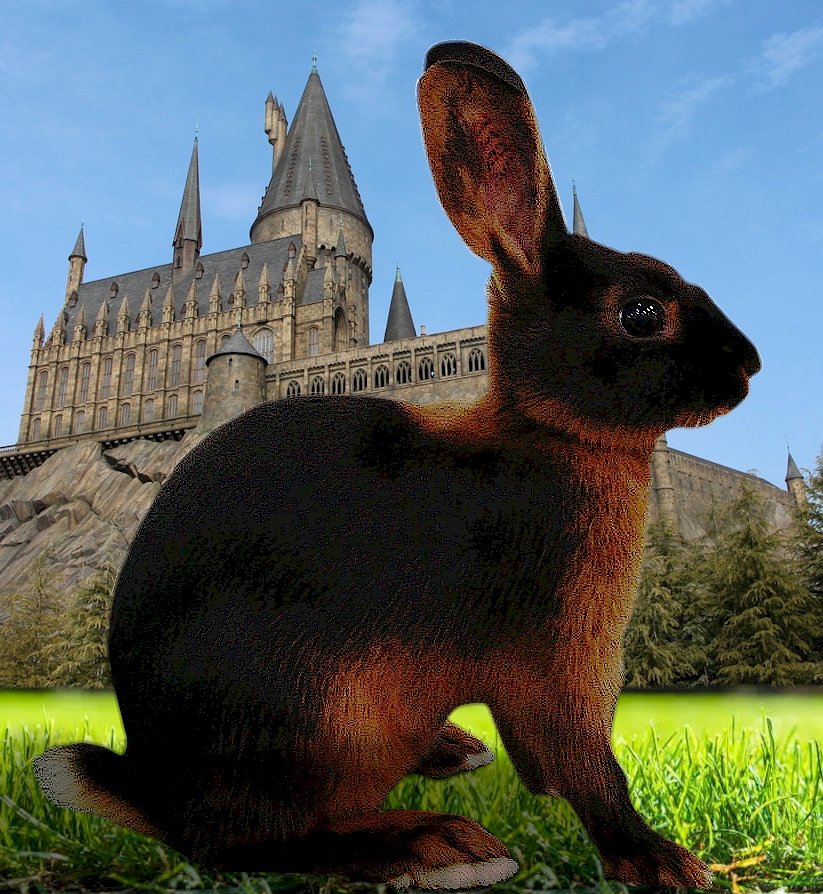 |
| English Tan Rabbit |
Tan Rabbits are a stylish and compact breed that captures the attention of enthusiasts worldwide. Originally hailing from England, these rabbits have surged in popularity within the United States in recent years. They present an array of captivating varieties: black, blue, chocolate, and lilac. Once fully matured, Tan Rabbits tip the scales at a range of 4 to 6 pounds.
Originating in England during the late 1800s, Tan Rabbits quickly established their presence in the show circuits.
Within the United States, the breed adheres to defined adult weight ranges:
Does (females): 4 - 6 pounds
Bucks (males): 4 - 5½ pounds
Tan Rabbits exhibit a distinctive arched physique. Their arch commences at the nape of their neck, flowing seamlessly over shoulders, midsection, and hips. Displaying a lean and well-proportioned structure, they boast a short, deep body type. Their striking appearance emerges from unique markings, vivid coloration, and a pronounced contrast. All four varieties—black, blue, chocolate, and lilac—showcase identical patterned markings. The Tan breed's intense and deep red coloration should maintain consistency from chest to tail.
Tan Rabbits commonly thrive on pellets and/or Timothy hay. Some Tan strains, prevalent on the West Coast of the US, tend to be lighter in weight. These strains usually don't struggle with exceeding the maximum weight limit and may even find it challenging to meet the minimum weight requirement. Conversely, other lines, more frequently found on the Eastern US, can lean toward being heavier and susceptible to weight gain. A recommended daily feeding regimen typically consists of a heaping half cup of pellets.
When it comes to housing, Tan Rabbits, although compact, require an enclosure of at least 3 square feet with a height of 14 inches. Regular exercise is paramount, and they should not be allowed to roam freely outside their enclosure without supervision. When housed in hutches with solid sides and roofs, incorporating wire elements into the cage design supports proper ventilation and prevents respiratory issues and parasites.
Given their active nature, Tan Rabbits need regular exercise. Allowing them to explore new areas should be preceded by rabbit-proofing. Equipping their cage with rabbit-safe toys enhances their environment.
Breeding Tan Rabbits involves considering their distinct color groups: black/blue and chocolate/lilac. While these rabbits are shown by variety, understanding the genetics of color is essential. Breeding within the same color group initially is advisable, like pairing black with black or chocolate with chocolate. While traditionally discouraged, crossbreeding recessive colors (e.g., blue to blue) can yield success for experienced breeders.
Typically, Tan litters consist of around 4 babies, although litter sizes can vary. Tans generally do not exhibit common genetic defects. However, their hyperactivity can lead to issues such as birthing outside the nest box or accidentally stepping on babies. Minimizing stress through a calm environment and consistent handling can mitigate these problems.
Unlike other marked breeds, all Tan Rabbits are born with patterned markings, reducing the occurrence of "mismarked" individuals. While marking, type, and color quality vary, the majority of babies typically meet the minimum requirements for ARBA-sanctioned shows. Dental and genital issues are the most common genetic disqualifications. Non-genetic disqualifications like ripped teeth, toenails, and tails do not impact suitability for breeding.
Locating quality Tan Rabbits may be a challenge based on location. Organizations like the American Tan Rabbit Specialty Club (ATRSC) and the National Tan Rabbit Club in the UK maintain lists of breeders. Some breeders offer shipping options for remote buyers. The annual American Rabbit Breeders Association (ARBA) National Convention is another avenue for acquiring rabbits from diverse locations.
In the US, Tans adhere to the ARBA Standard of Perfection for show criteria. "All breed" shows occur regularly across the country, where various ARBA-accepted breeds compete for Best of Breed recognition. Tan Rabbits are evaluated as a full-arch "running breed," allowing them to move freely during judging to assess type, color, and markings.
In the UK, the British Rabbit Council (BRC) sets the show criteria, with the National Tan Rabbit Club serving as the breed's dedicated enthusiast hub.
